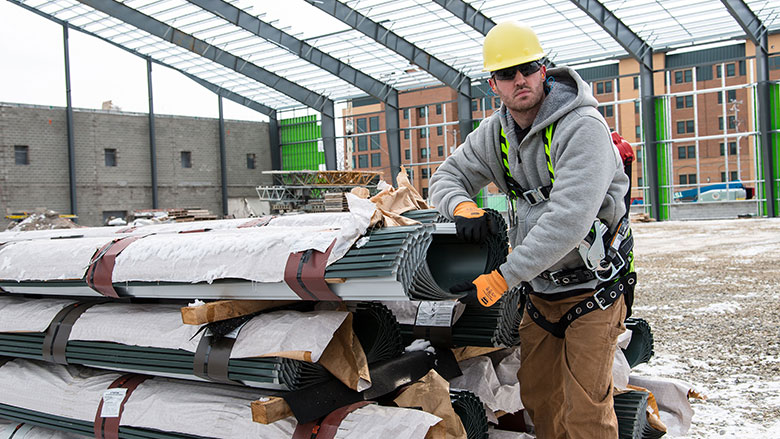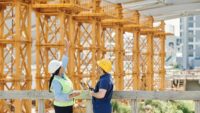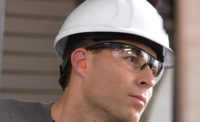No matter the type of construction worksite, from residential to commercial to industrial, construction workers are likely to encounter hazards each day while they are on the job. That’s why it’s imperative to take proper measures to help prevent injuries and fatalities. And it’s not just worker wellbeing that is at risk from worksite dangers – when workers are out from injuries sustained on the job, business outcomes can be compromised for on-time and on-budget project execution.
Implementing a safety-first culture
According to the National Safety Council, in 2021, construction was the industry with the largest number of preventable fatal injuries. Simply put, the key to helping keep workers safe is to avoid injuries in the first place. That begins with establishing cultural guidelines within organizations that help workers make the right decisions while on the job.
Despite best intentions, accidents can happen when safety precautions are not top of mind. To help establish a pattern of safe behavior and cultivate a safety-first culture, consider a behavior-based approach. Behavior-based safety aims to replace unsafe behavior with safe habits that are engaged automatically. Business processes should encourage safe behaviors and help ensure that people make decisions with safety as the top priority. However, it is not a single training session. It is a way of working that leaders must continually promote for sustainable, positive results.
To fully embrace behavior-based safety, a systematic approach may be necessary and can involve updating machinery and equipment or updating the work environment. In addition, a full education and training program is critical to teach employees - no matter how many years of experience they have - on how to perform their tasks in a way that reduces workplace hazards and prioritizes safety.
PPE provides the last line of defense against injury
It takes thoughtful planning to reduce the presence of worksite hazards on construction sites and for workers to make safe decisions. But risks cannot be completely removed from work environments, which is why proper personal protective equipment (PPE) is needed.
PPE should be thought of as the last line of defense against injury. When everything else has been done to minimize safety risks in a work environment, PPE helps keep workers protected in case they face a hazard. Outlined below are common construction scenarios where PPE is needed to protect worker health.
Hazardous noise
Construction sites present several forms of noise hazards, and any noise above 85 decibels (dB) has potential to cause long-term hearing loss. Common examples include using a bulldozer (100 dB), a chain saw (110 dB), and repeatedly hammering in a nail (120dB).
Construction workers whose jobs regularly involve loud machinery and tools are in need of hearing protection. Fortunately, there are many ways to protect worker hearing, including a variety of earmuffs and ear plugs that provide ranges of protection based on the level of noise exposure.
Hand injuries
Workers can sustain injuries when working with sharp tools and equipment with moving parts. Hands can be a workers’ most valuable tool, so using the right protection is vital. There are many options available to help keep workers safe when handling all types of surfaces and materials across a variety of environments, including mechanical gloves, cut-resistant gloves, chemical gloves, sleeves and more.
Working at heights
Working at height involves situations where workers could fall over an edge while above ground, or where workers are near an opening or unstable surface, such as on a ladder, scaffolding or roof. Falls from height are the most common cause of construction fatalities, and it is critical that employers provide the right fall protection for each situation, including self-retracting lanyards, harnesses and anchorage systems.
Airborne hazards
Construction workers are commonly exposed to dangerous airborne contaminants, and one of the most common is breathable crystalline silica. 2.3 million people in the U.S. are exposed to silica while at work. Employers should limit workers’ exposure to respirable crystalline silica and take measures to help protect them by using either reusable or disposable respirators with a tight seal across the workers’ face for maximum protection.
Dropped objects and struck-by injuries
Construction workers can be exposed to dropped objects or experience bumps to the head, which is why using proper head protection is necessary to help keep workers safe. After all, the head houses one of the most important organs in the human body: the brain.
When selecting head protection such as a hard hat or a safety helmet, the first necessity of all PPE is that it provides the requisite level of protection for the task at hand. It is also imperative to select headgear that workers will be comfortable wearing for an entire shift. Opt for head protection that incorporates comfortable padding and allows for suspension height adjustment, because head sizes can vary from worker to worker.
Electrocution
It’s not uncommon for construction workers to face electrical hazards, but risks can be minimized with the correct precautions. Workers should use caution around live wires, de-energize equipment before starting any repairs, and always wear the right PPE, including insulating rubber gloves, leather glove protectors, and insulating rubber sleeves and footwear made to help protect against a range of electrical hazards.
Eye protection
Sun exposure, haze, flying debris, dust and large particles can harm a construction workers’ eyes if they aren’t wearing the proper safety eyewear. Depending on the work being performed, like woodworking, machinery operations, material welding and cutting, there are various options workers should consider including safety glasses, goggles and face shields.
Safe environments lead to better outcomes
Before beginning a project, it’s important that all workers are empowered to take control of their wellbeing and make safe decisions, and supervisors and managers should reinforce the importance of safety protocols and the need for PPE every single day.








